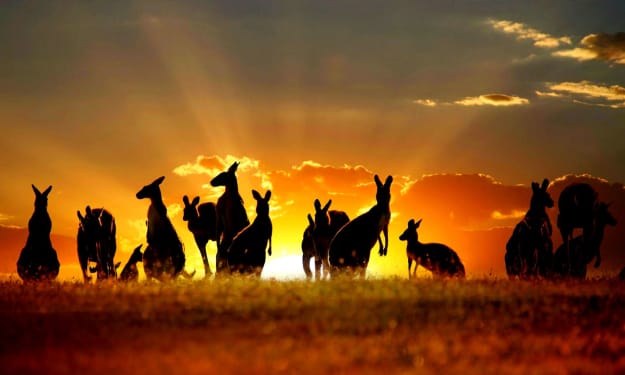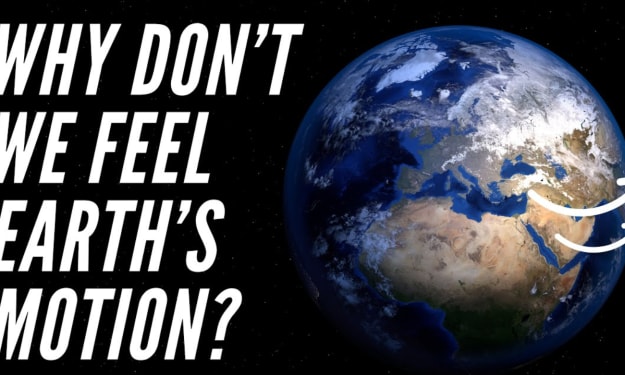Exploring Hypothetical Realities: Earth's Solitude, the Moon's Vanishing, and the Persistence of Dinosaurs
Unveiling the Consequences of Alternate Scenarios on Earth's Dynamics, Ecosystems, and Evolution

Introduction:
In this article, we delve into several intriguing hypothetical scenarios, considering the consequences if Earth was the solitary planet in our solar system, if the moon ceased to exist, or if dinosaurs had never faced extinction. By examining the potential outcomes of these alternate realities, we can gain a fascinating perspective on the interplay of celestial bodies, the intricate balance of ecosystems, and the evolutionary trajectory of species.
1. Earth as the Only Planet in the Solar System:
Imagining a universe where Earth stands alone as the sole planet requires us to reconsider the intricate dynamics at play within our solar system. The absence of other planets would disrupt the delicate gravitational equilibrium that currently exists. Consequently, Earth's orbit would be altered, leading to significant changes in atmospheric temperature. Depending on which planet ceased to exist, Earth could experience extreme heat, akin to Mercury's scorching temperatures, or bitter cold, similar to Saturn's frigid climate. These extreme conditions would render life as we know it impossible or severely limited. Furthermore, the absence of neighboring planets would disrupt the patterns of seasons, affecting the length of days and the duration of a year.
2. The Moon's Disappearance:
Considering the moon's vital role in shaping Earth's tides, its sudden absence would have far-reaching consequences. Tides, responsible for nourishing and sustaining coastal ecosystems, would shrink by approximately 75 percent. This reduction in tidal influence would disrupt the delicate balance of marine life, impacting organisms such as crabs, mussels, and sea snails that inhabit tidal zones. Coastal ecosystems, intricately linked to these tidal patterns, would experience significant changes, leading to ecological imbalances.
Furthermore, the moon plays a crucial role in stabilizing Earth's climate. Its gravitational pull assists in mixing warm tropical waters with colder Arctic waters, contributing to a more temperate climate worldwide. Without the moon's influence, this natural climate regulation would be severely compromised. Weather patterns would become erratic, making weather forecasting considerably more challenging. The absence of the moon would also affect Earth's axial tilt, potentially triggering substantial shifts in climate, such as prolonged ice ages. Nocturnal animals reliant on moonlight, including moths and newly hatched sea turtles, would face considerable challenges in navigating their environments.
3. Dinosaurs' Survival and Evolution:
Exploring the scenario in which dinosaurs persisted beyond the mass extinction event 66 million years ago unveils intriguing possibilities for Earth's ecosystem and the subsequent evolution of life forms. Approximately 55 million years ago, a significant rise in temperatures transformed Earth's climate, creating conditions conducive to the proliferation of rainforests and abundant vegetation. However, the nutrient-poor quality of these new plant species would have posed challenges for the sustenance and growth of dinosaurs. As a result, dinosaurs would likely have experienced a reduction in size as they struggled to derive sufficient energy from these limited food sources.
Additionally, the separation of South America and Antarctica around 34 million years ago led to cooler and drier climates, favoring the survival of long-legged dinosaurs. The need to travel longer distances to find food and water due to seasonal fluctuations would have provided an advantage to dinosaurs with specialized adaptations, such as increased tooth count or enhanced visual acuity. This prolonged coexistence of dinosaurs may have hindered the evolutionary progression of mammals, potentially altering the course of life on Earth.
Conclusion:
Exploring alternative scenarios, such as Earth's isolation in the solar system, the moon's disappearance, or the continued existence of dinosaurs, allows us to contemplate the intricate interdependencies and delicate balance of our planet's ecosystems. These hypothetical situations prompt us to appreciate the significant roles played by celestial bodies, climatic conditions, and evolutionary events in shaping the world as we know it. While these scenarios fuel our imagination, they also highlight the remarkable adaptations and resilience of life on Earth throughout its history.
About the Creator
Himanshu Singh
Education Specialist | Researcher | Advocate
Transforming Education for a Brighter Future ✨
Passionate about student-centered learning, inclusive education, and innovative teaching strategies. Join me on this educational journey! 🎓🌟





Comments
There are no comments for this story
Be the first to respond and start the conversation.